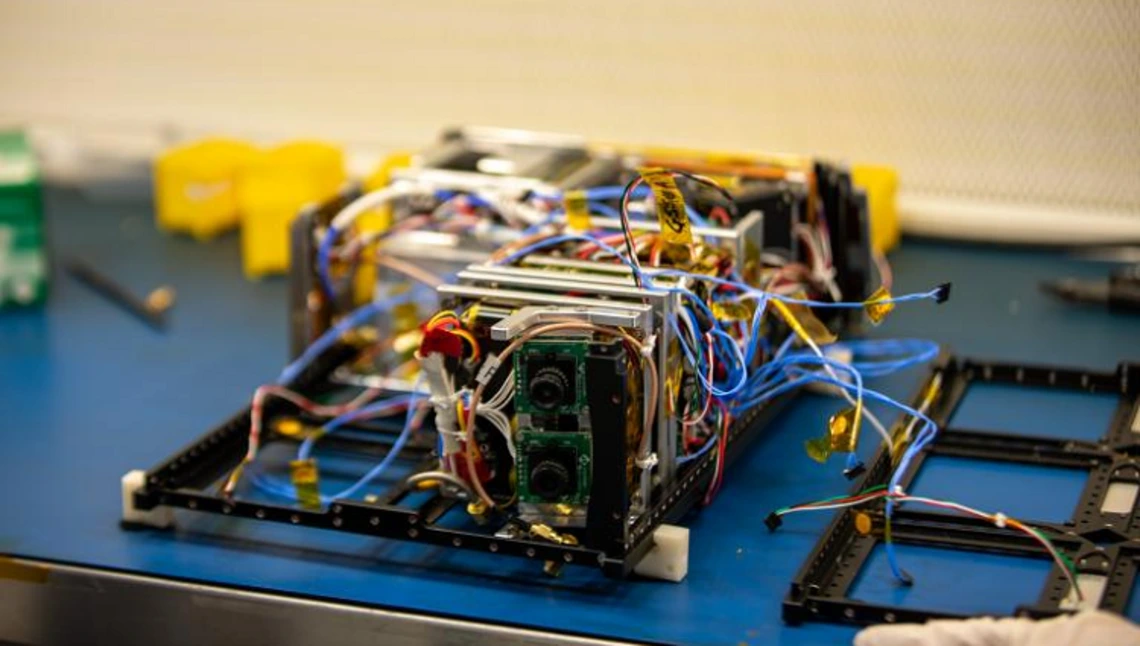Undergrad is Lead Systems Engineer on Satellite Mission

A team of University of Arizona students are working to better understand our atmosphere with a device smaller than a microwave. Their CatSat, a miniature satellite, is planned to probe the ionosphere – where Earth's atmosphere meets space. The small satellite will use an inflatable antenna developed by Tucson-based company Freefall Aerospace.
All spacecraft require antennas to transmit and receive signals, allowing for communication with Earth. Yet, the capabilities of miniature antennas have historically been restricted, as they can only carry very small antennas. Signals from these small antennas can take days to finally reach Earth. CatSat's inflatable antenna, invented at the UA and further developed by Freefall Aerospace, combats this problem thanks to its lightweight material that tightly folds within the spacecraft. After launch, CatSat will stabilize its orientation so that it can eventually deploy the stowed antenna.
"Following a successful launch, this inflatable antenna will be the first of its kind in space," said SIE student Hilliard Paige, the project's lead systems engineer. "If it works, it will be a pathfinder for future missions."
